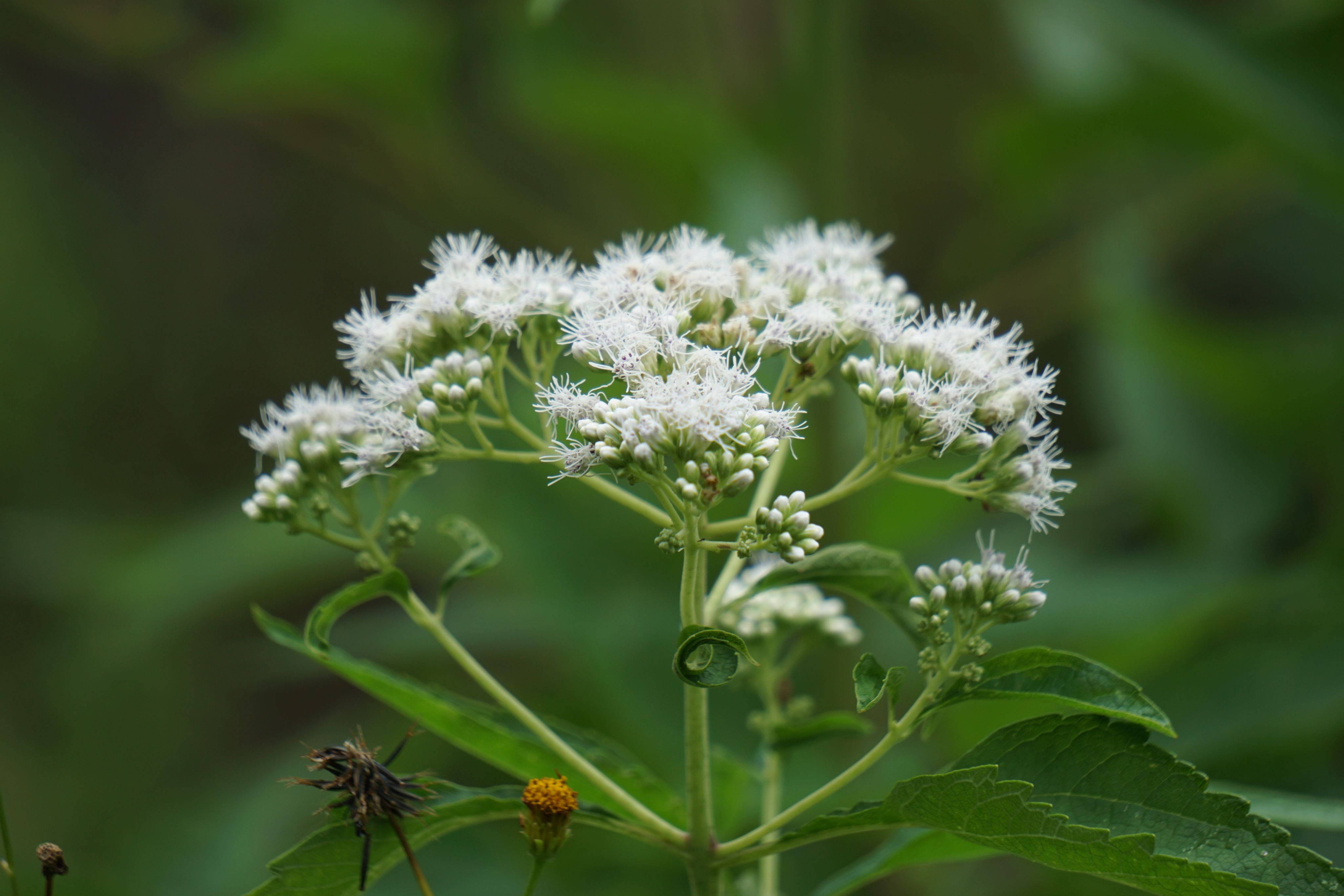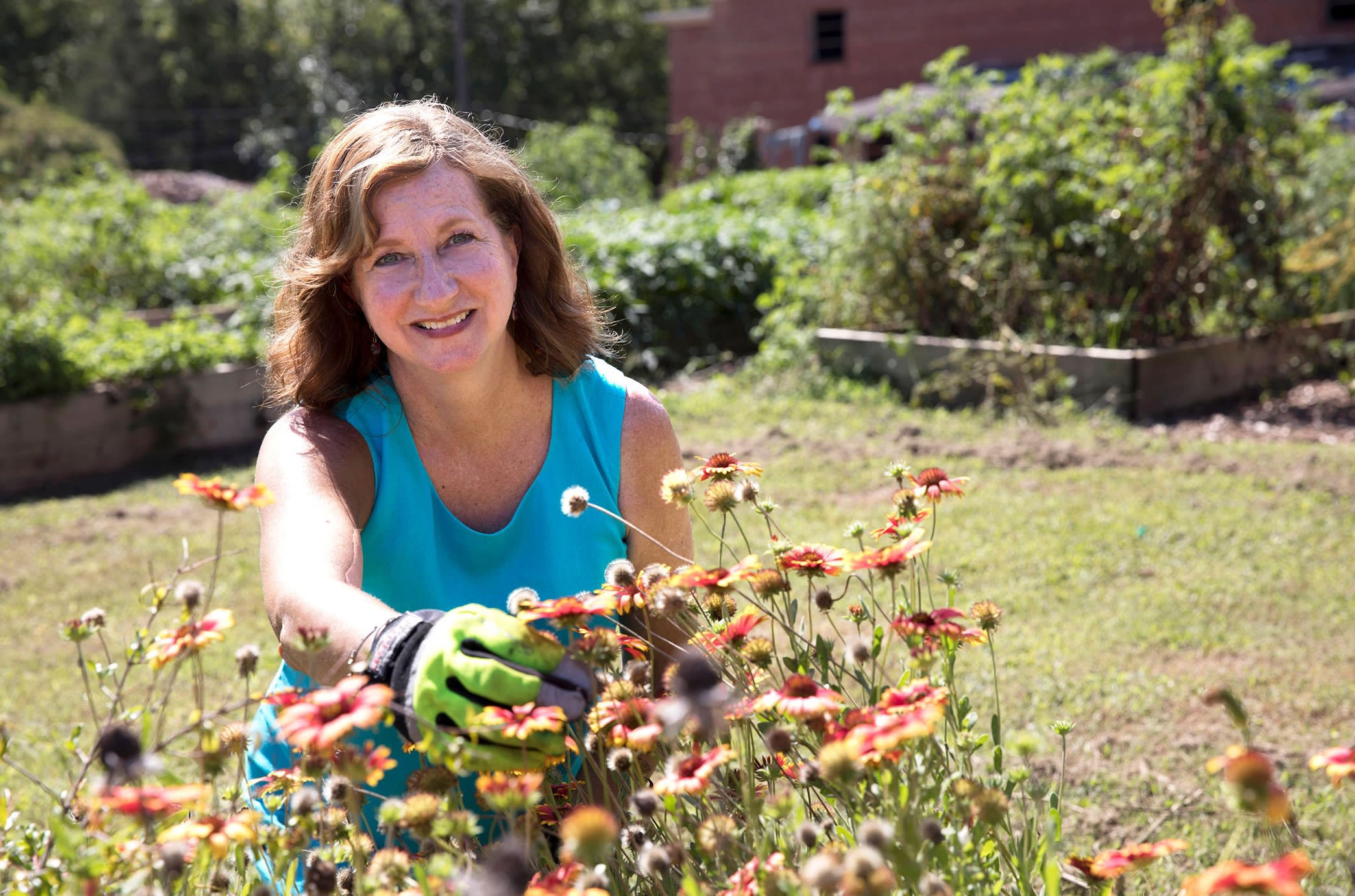Wild beauty
Done with mowing? How to transform your lawn into a native, perennial landscape
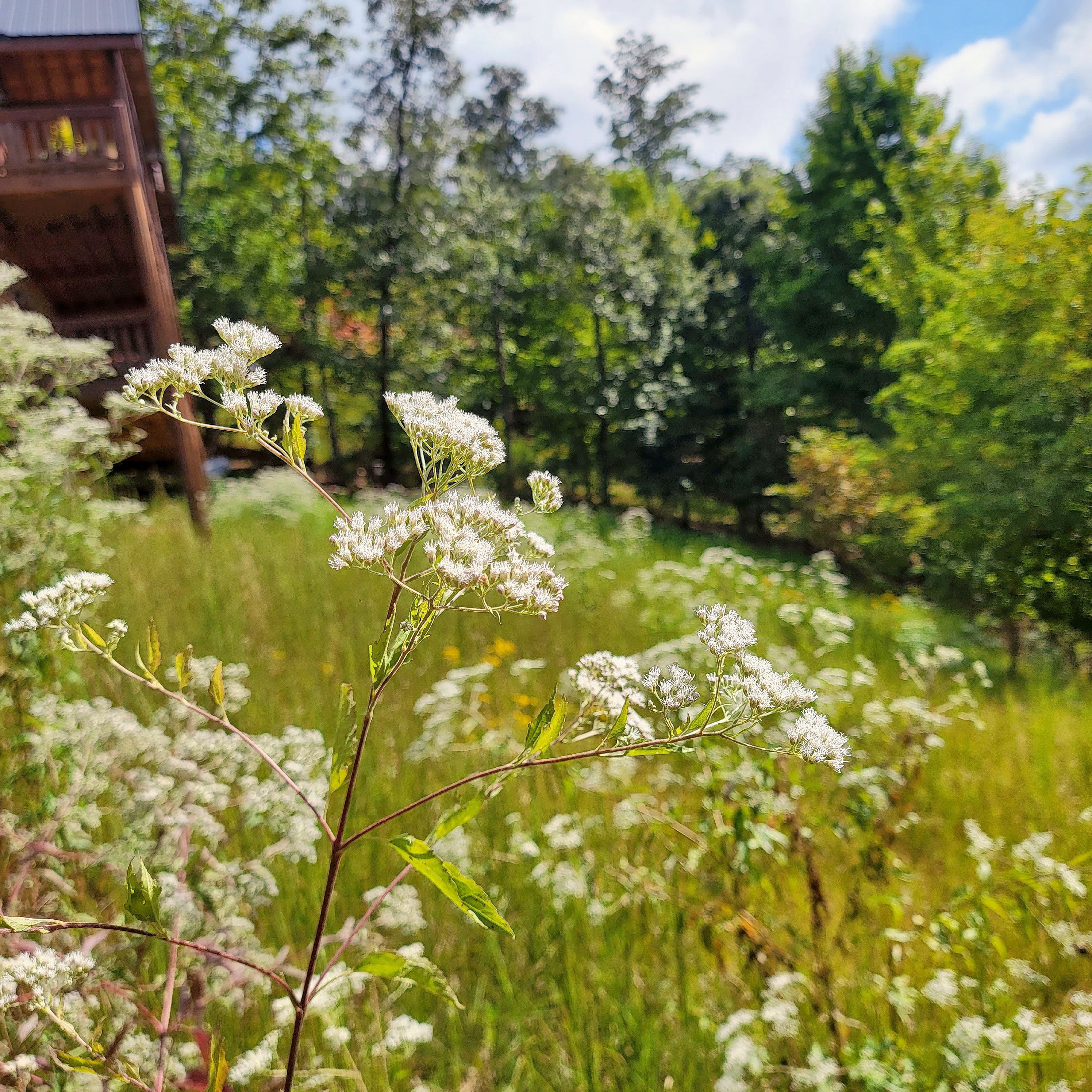
On a tour of her Blairsville, Georgia, home, Becky Griffin navigates a swaying maze of perennial grasses interspersed with pussy willows, switchgrass and boneset.
Although it may not fit the traditional image of a well-kept lawn, this landscape is the result of careful planning and a deep commitment to ecological stewardship.
As a native plant enthusiast and coordinator of the Great Southeast Pollinator Census, Griffin hand-selected each of these native plants for the countless ecological services they provide year-round, from supporting pollinators to offering habitat for birds and mammals. For Griffin and a growing number of like-minded individuals, the beauty of a landscape lies not just in its appearance but in its function — an idea that has fueled the rising trend of “re-wilding” home spaces as an alternative to conventional, high-maintenance lawns.
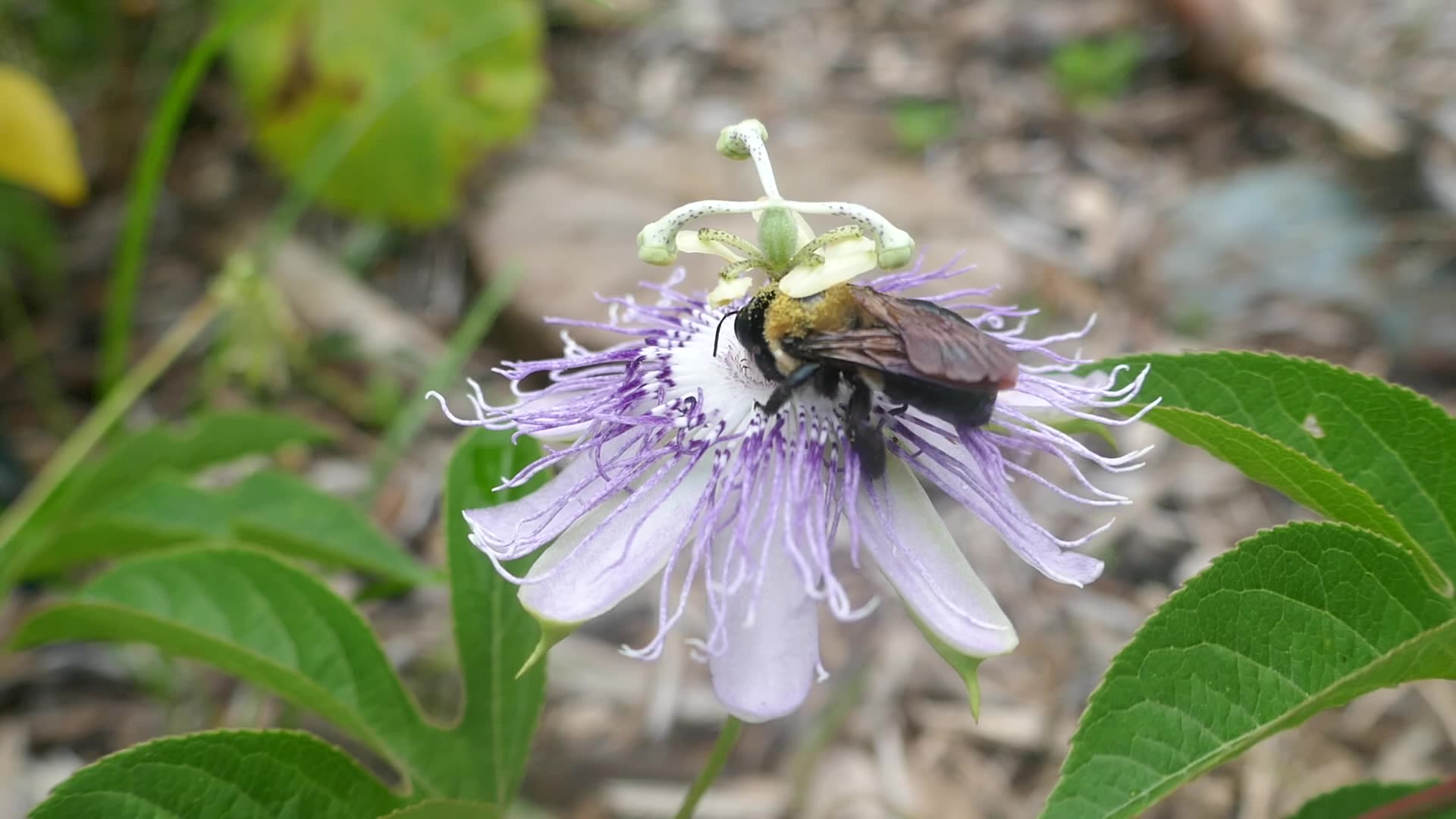
The community and school garden coordinator for University of Georgia Cooperative Extension, Griffin said that as more people rethink the traditional lawn, the shift toward native prairies and wildflower meadows redefines what it means for a yard to be beautiful. By thoughtfully nurturing these ecological landscapes, homeowners can create a visually appealing outdoor space while providing essential habitat for local wildlife and reducing the need for weekly maintenance.
“The other benefit of using native plants,” said Griffin, “is that they are regionally adapted and have developed natural resistance to pests and tolerance to drought and other environmental extremes.”
A native plant and pollinator enthusiast, Becky Griffin is a Georgia Certified Beekeeper, coordinator of the Great Southeast Pollinator Census and a member of UGA’s Native Plants and Beneficial Insect Working Group. (Photo by Dorothy Kozlowski)
A native plant and pollinator enthusiast, Becky Griffin is a Georgia Certified Beekeeper, coordinator of the Great Southeast Pollinator Census and a member of UGA’s Native Plants and Beneficial Insect Working Group. (Photo by Dorothy Kozlowski)
Though it may seem chaotic, Griffin has cultivated her micro-prairie over the past few years by carefully removing unwanted non-native and invasive species and replacing them with native grasses and forbs, or wildflowers, that thrive in north Georgia. For her, the transition to this type of landscape was not only about the environmental benefits. The shift also served her desire to slow down as she moved into a different phase of life.
“Our kids are grown and out of the house now, so how we utilize our outdoor space has changed,” Griffin said.
“Now, instead of chasing after children, we’re birdwatching and enjoying the wildlife that calls our yard home. It’s a different kind of play — discovering a mother fox with her kits, watching migratory birds and butterflies stopping by on their long journeys, or stumbling upon a fawn left by its mother while she forages. That’s the joy we find in our backyard now.”
Planning your native landscape
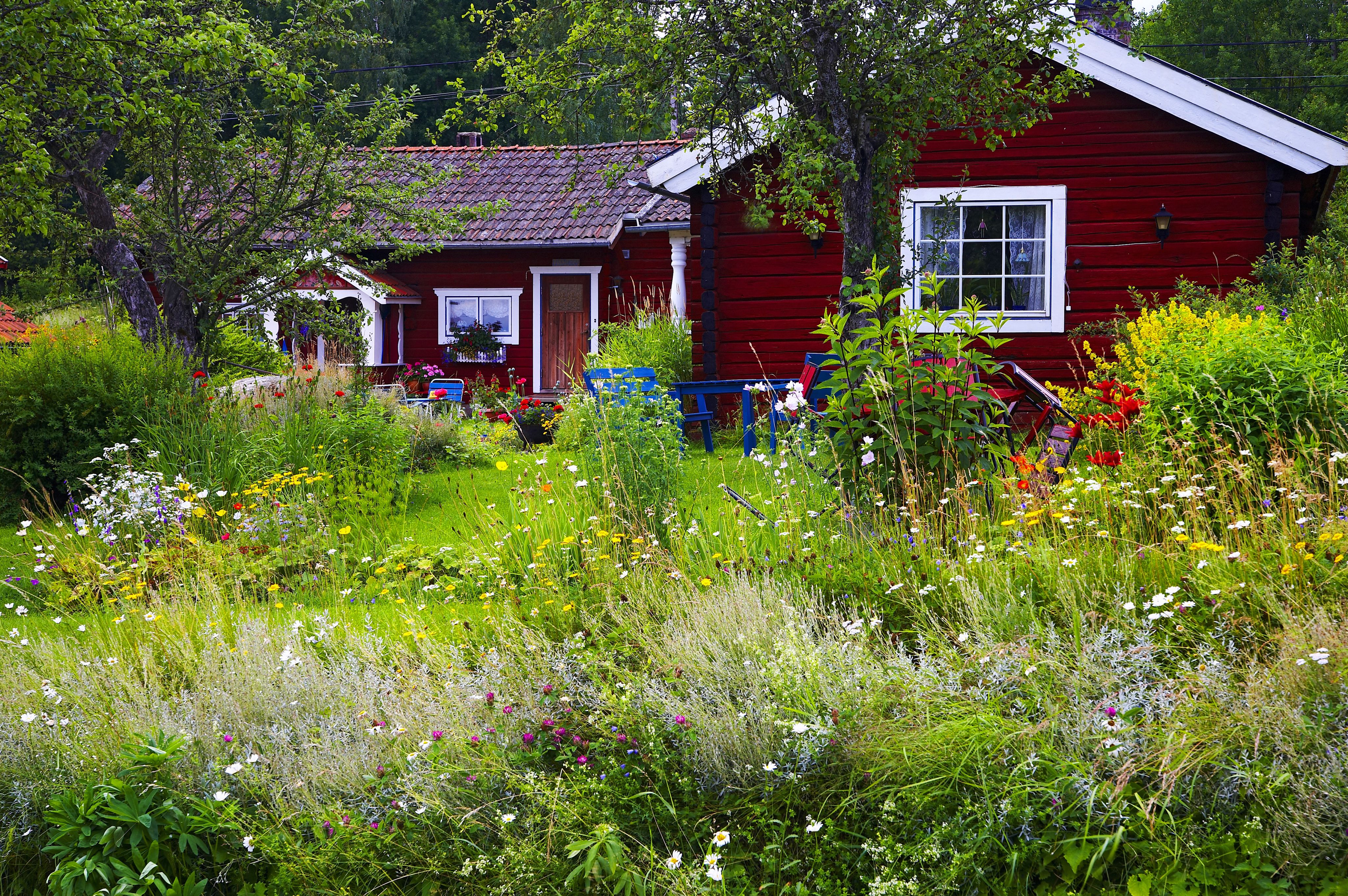
Before starting the transformation to a native, perennial landscape, think about how much lawn you’d like to keep. Griffin suggests that you don’t need a large area to see the benefits of native plants.
“In fact, having a smaller space to begin with can be easier for homeowners to manage and control,” she said. “One approach is to gradually replace sections of turf with native prairie or meadow plants. By removing a little bit of lawn each year, you can slowly cultivate the desired plants and observe how they naturally establish themselves.”
Griffin and her colleague Bodie Pennisi, Vincent J. Dooley Professor in the Department of Horticulture in the UGA College of Agricultural and Environmental Sciences, have dedicated their careers to their love of plants and pollinators. Pennisi, who teaches the course “Plants, Pollinators and You,” adds that choosing the right plants for your conditions is key to long-term success.
Bodie Pennisi is a CAES horticulture professor and Extension landscape specialist who conducts applied research trials on wildflowers and ornamental plants. (Photo by Lavi Del Carmen Astacio)
Bodie Pennisi is a CAES horticulture professor and Extension landscape specialist who conducts applied research trials on wildflowers and ornamental plants. (Photo by Lavi Del Carmen Astacio)
When selecting plants, it is important to do a bit of preliminary research to know what kinds of plants grow well in your area. Understanding your hardiness zone and the local ecology will help you choose species that thrive in your specific conditions.
An Extension landscape specialist, Pennisi suggested following these general steps to help create a successful native prairie or meadow:
- Choose compatible plants. Select species that grow well together and are well-adapted to your environment.
- Focus on perennials. Prioritize perennials over annuals for long-term sustainability and to reduce the general workload over time.
- Include native grasses and wildflowers. For in-depth information on choosing species native to Georgia, check out “Native Plants for Georgia Part III: Wildflowers” and “Native Plants for Georgia Part IV: Grasses and Sedges,” part of a series of helpful guides produced through UGA Extension.
A few statewide plant options
Milkweed
(Asclepias spp.)
Milkweed is the only plant that monarch caterpillars eat, making it vital to their lifecycle. These plants need full sun and well-drained soil.
Southern mountain mint
(Pycnanthemum pycnanthemoides)
Mountain mint has a long bloom time throughout the heat of the summer and is attractive to all types of bees, wasps and beetles. The plant has a minty fragrance.
Broomsedge
(Andropogon virginicus)
The upright growth habit of broomsedge offers cover for ground-nesting birds and other mammals and provides overwintering habitat for many insects and birds. Its extensive root system prevents soil erosion, and the seeds are eaten by birds.
Little bluestem
(Schizachyrium scoparium)
Little bluestem is the host plant for many skipper butterfly species. It also provides food for many other insects and overwintering habitat for many insects and animals.
Goldenrod
(Solidago spp.)
Goldenrod is the common name for plants in the genus Solidago. It is considered a keystone species and supports a wide diversity of pollinators, blooming in late summer and early fall until frost, providing essential nutrients to fall pollinators, including migrating monarchs.
Partridge pea
(Chamaecrista fasciculata)
Partridge pea pods are attractive to songbirds and game birds. As a legume, the plant fixes nitrogen and helps improve the soil. It is also drought-tolerant and helps prevent erosion. It is a bumble bee favorite and the host plant for many butterflies and moths, including the io moth and grey hairstreak.
Tick trefoil
(Desmodium spp.)
Commonly planted in native gardens, habitat restoration projects and wildlife areas. Its seeds are a key food source for several birds and small mammals. This legume helps add nitrogen to the soil, and all parts of the plant play a role in the ecosystem of many insects and animals.
Indigo
(Baptisia spp.)
Many species of wild indigo are native to Georgia and serve as excellent pollinator plants, particularly for native bees. One of the most well-known is blue wild indigo (Baptisia australis). This plant works well as a shrub alternative and is a great option for filling larger landscapes.
Prairies and meadows

Both meadows and prairies feature a blend of native grasses and wildflowers, though prairies tend to have a higher proportion of grasses. Prairies typically consist of warm-season grasses that thrive in the heat, while meadows often feature cool-season grasses that flourish in the milder temperatures of spring and early summer. Despite these differences, many species can be found in both environments and the terms are often used interchangeably.
Using a variety of plants makes the most efficient use of water, nutrients and sunlight throughout the changing seasons, with plants accessing nutrients from different soil depths and capturing light at various heights. Griffin prefers to copy what she sees in nature, setting things in motion and then letting them change naturally over time.
UGA Extension has several native plant guides and resources that provide a wealth of information when considering which plants to select. While the plant lists are robust, Griffin and Pennisi said to start with a few selections at first and then expand each year as you become more comfortable with your landscape and growing conditions.
Hardiness, moisture and sunlight requirements, and soil that supports the plantings will determine the overall success and sustainability of any type of garden. The key is to identify the unique characteristics of your own space and match the plants to those conditions.
Prairie plants
In general, prairie grasses can be separated into two categories: warm-season and cool-season grasses.
Warm-season grasses grow in the summer, flower and fruit in the fall, and then go dormant after the first frost. In the fall, these grasses turn to beautiful shades of gold, orange, and bronze and produce seeds for birds and other wildlife. Examples include broomsedge, bluestems and Indiangrass.
Cool-season grasses grow in the late fall, winter, and early spring, flower and fruit in the late spring, then go dormant in the summer. Examples include oatgrasses, witchgrasses and bluegrasses.
Meadow plants
When planting a native meadow, you can choose between annuals and perennials. Annual meadows, commonly found in wildflower seed mixes, grow quickly and provide vibrant color but typically need replanting each year. Some annuals may self-seed and return the following season. Perennials, however, are cold-hardy plants that return year after year. While they can thrive for many seasons, their lifespans vary, with some lasting only three to five years. Though perennials bloom for shorter periods, they require less water once established, making them perfect for drought-prone areas. They also attract local pollinators and provide food and habitat for wildlife. Many perennials can be divided or reseeded, allowing them to flourish and keep your meadow thriving over time.
Georgia has a wealth of endemic wildflower species that thrive in diverse habitats, from coastal dunes and pine sandhills to savannas, meadows and forests, Pennisi said. While many of these plants are found in undisturbed natural areas, some have adapted to human-made landscapes like roadsides and farms, often appearing along road banks and edges. The UGA Extension publication, “Visual Guide to Common Wildflowers of South Georgia,” provides a visual guide to common herbaceous plants in sunny areas of south Georgia. Though not an exhaustive list, it highlights easily recognizable plants that are valuable to wildlife.
“Many of these plants exist naturally in the landscape, so being able to identify them as they appear and letting them become naturally incorporated into your yard makes this type of gardening more fluid," Pennisi said. "And the seeds come free, so that's an added bonus."
Warm-season grasses, like this lopsided Indiangrass (Sorghastrum secundum), turn beautiful shades of yellow and copper in the fall and produce seeds for birds and other wildlife.
Warm-season grasses, like this lopsided Indiangrass (Sorghastrum secundum), turn beautiful shades of yellow and copper in the fall and produce seeds for birds and other wildlife.
Warm-season grasses, like this lopsided Indiangrass (Sorghastrum secundum), turn beautiful shades of yellow and copper in the fall and produce seeds for birds and other wildlife.
Warm-season grasses, like this lopsided Indiangrass (Sorghastrum secundum), turn beautiful shades of yellow and copper in the fall and produce seeds for birds and other wildlife.
Meadows contain a blend of grasses and blooming flowers. The “Visual Guide to Common Wildflowers of South Georgia” provides a visual overview of annuals and perennials and their bloom times to help you select for year-round beauty.
Meadows contain a blend of grasses and blooming flowers. The “Visual Guide to Common Wildflowers of South Georgia” provides a visual overview of annuals and perennials and their bloom times to help you select for year-round beauty.
Checklist for establishment:
- Clear weeds by turning up the soil to expose weed seeds, allowing them to germinate and then destroying them.
- In the first few years, mow on a higher setting and at regular intervals to allow sunlight to reach establishing perennial plants.
- Avoid fertilizing as it encourages weed growth.
- Weed regularly until desired plants and grasses are established.
- Seed with a regional mix and add individual plantings as desired, aiming for diversity and a large number of species.
Acknowledging community perception
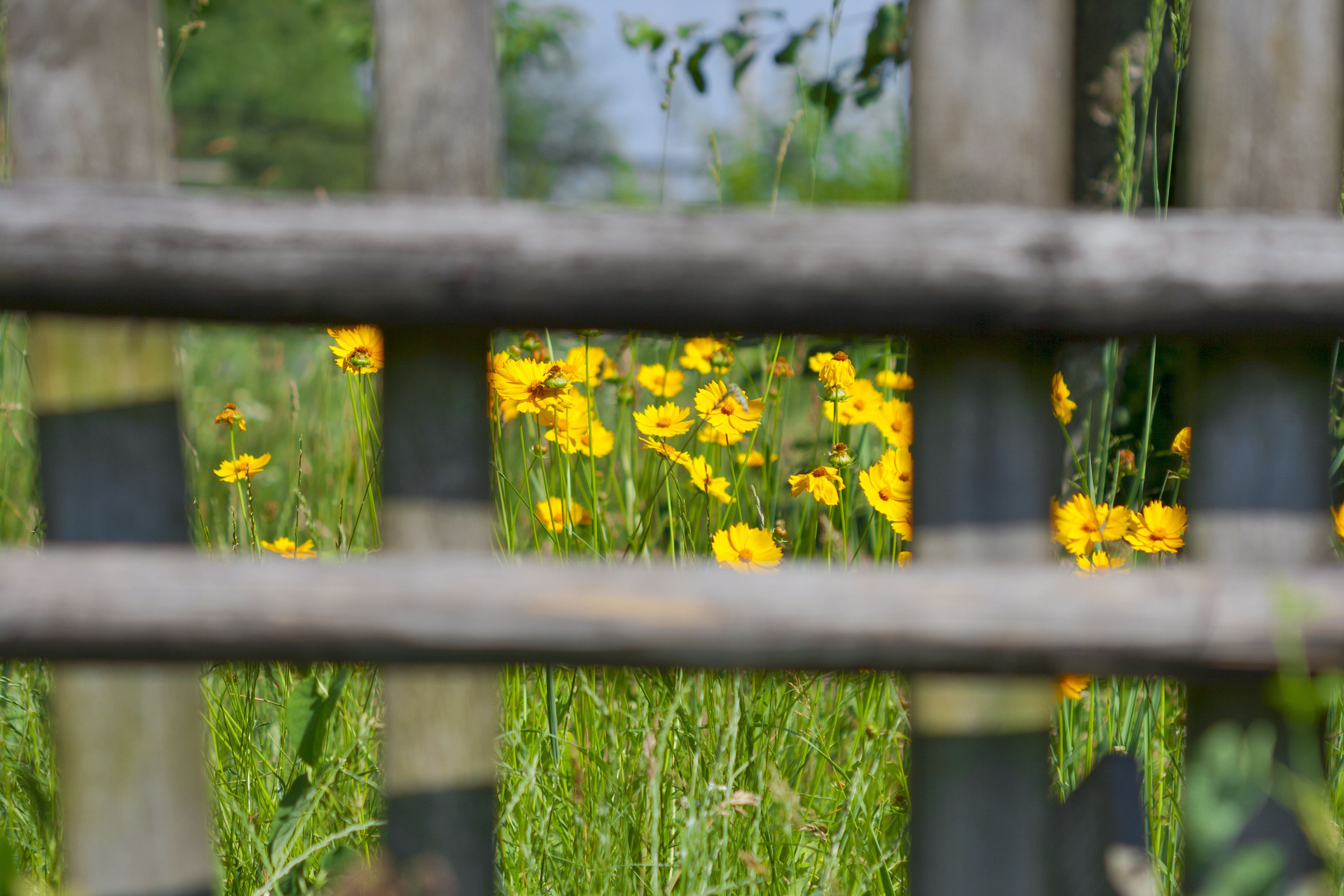
No matter what your goals are, re-wilding your outdoor space with native plants will never disappoint. However, it may invite criticism in neighborhoods with homeowner association guidelines that prefer a more uniform, manicured aesthetic. Being considerate of public perception is an important part of living in community with others. In these cases, Griffin and Pennisi said maintaining a sharp, mowed edge along taller grasses can give the space a more purposeful feel.
Putting up signs that explain the habitat’s purpose and roping or fencing off sections can help neighbors understand that establishing these native landscapes provides food and shelter for insects and wildlife, creating a natural ecological web.
Programs like the Georgia Green Landscape Stewards promote sustainable landscape practices at home and can serve as a means to educate neighbors on the benefits of using native plants in the landscape.
For assistance with the program and identifying native plants suitable to your area, contact your local UGA Extension office at extension.uga.edu/county-offices.
A Georgia Green Landscape Stewards sign identifies this property as land maintained according to fact-based sustainability guidelines provided by the UGA Extension program.
A Georgia Green Landscape Stewards sign identifies this property as land maintained according to fact-based sustainability guidelines provided by the UGA Extension program.
News media may republish this story. A text version and art are available for download.
